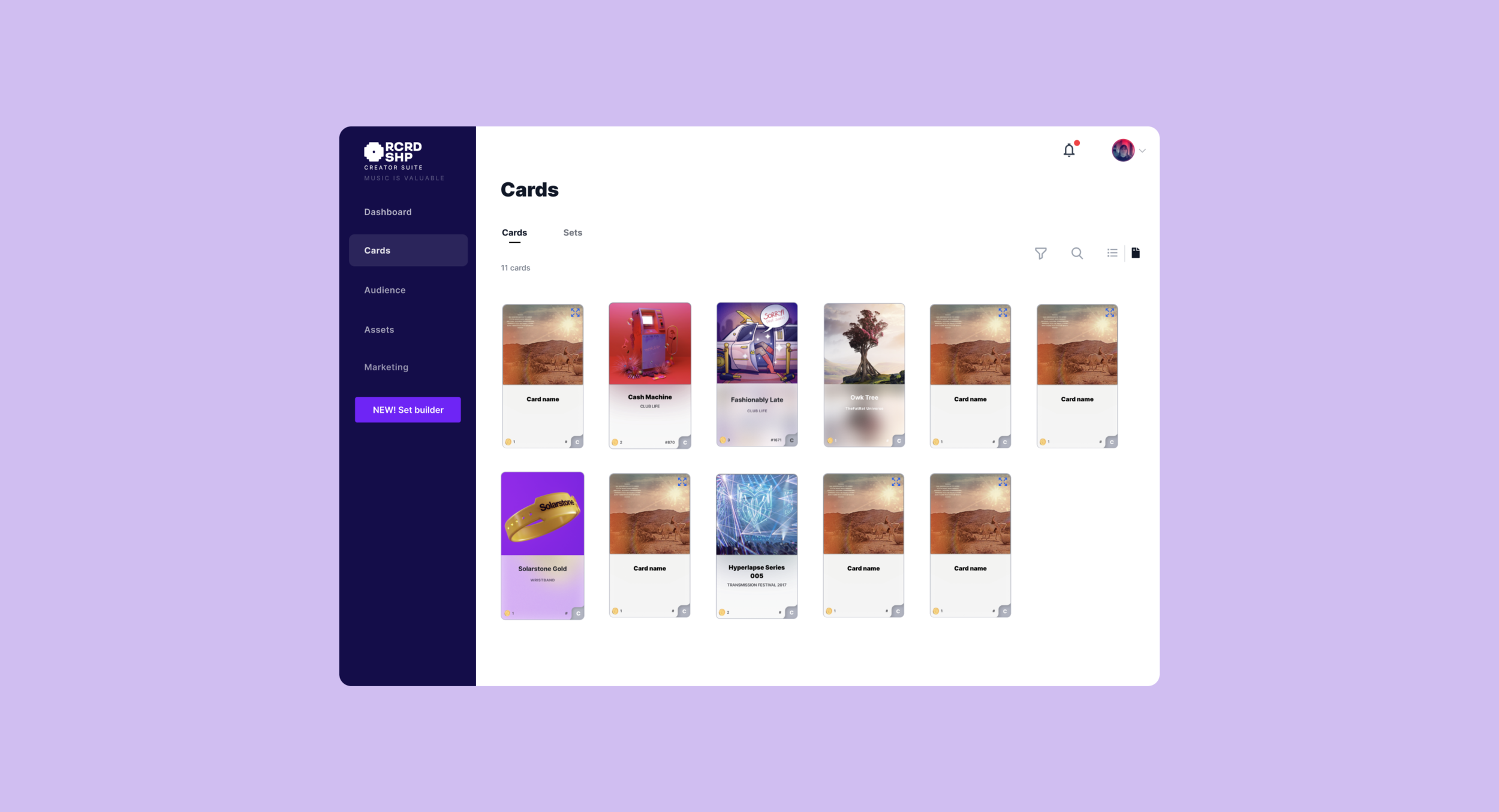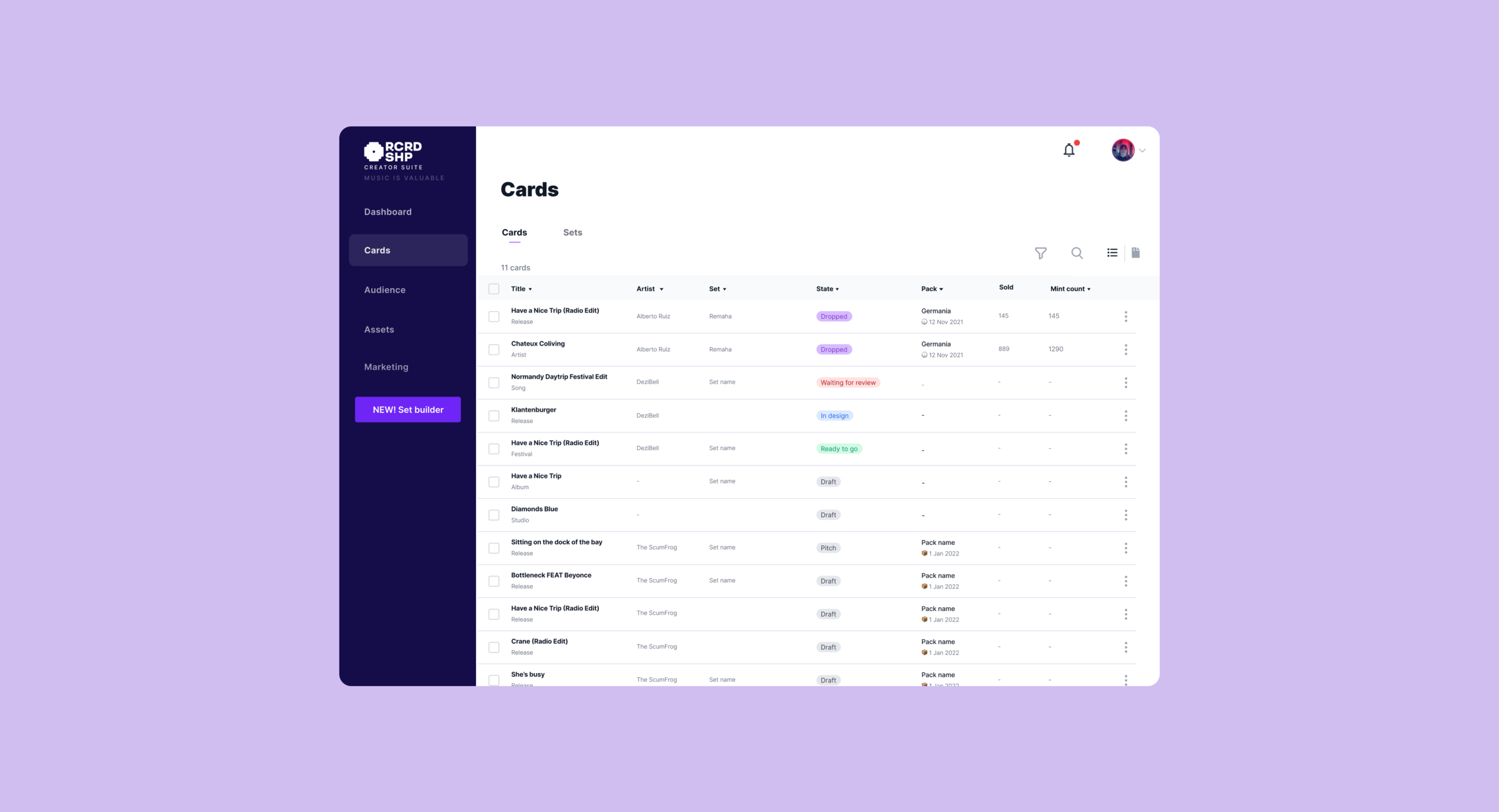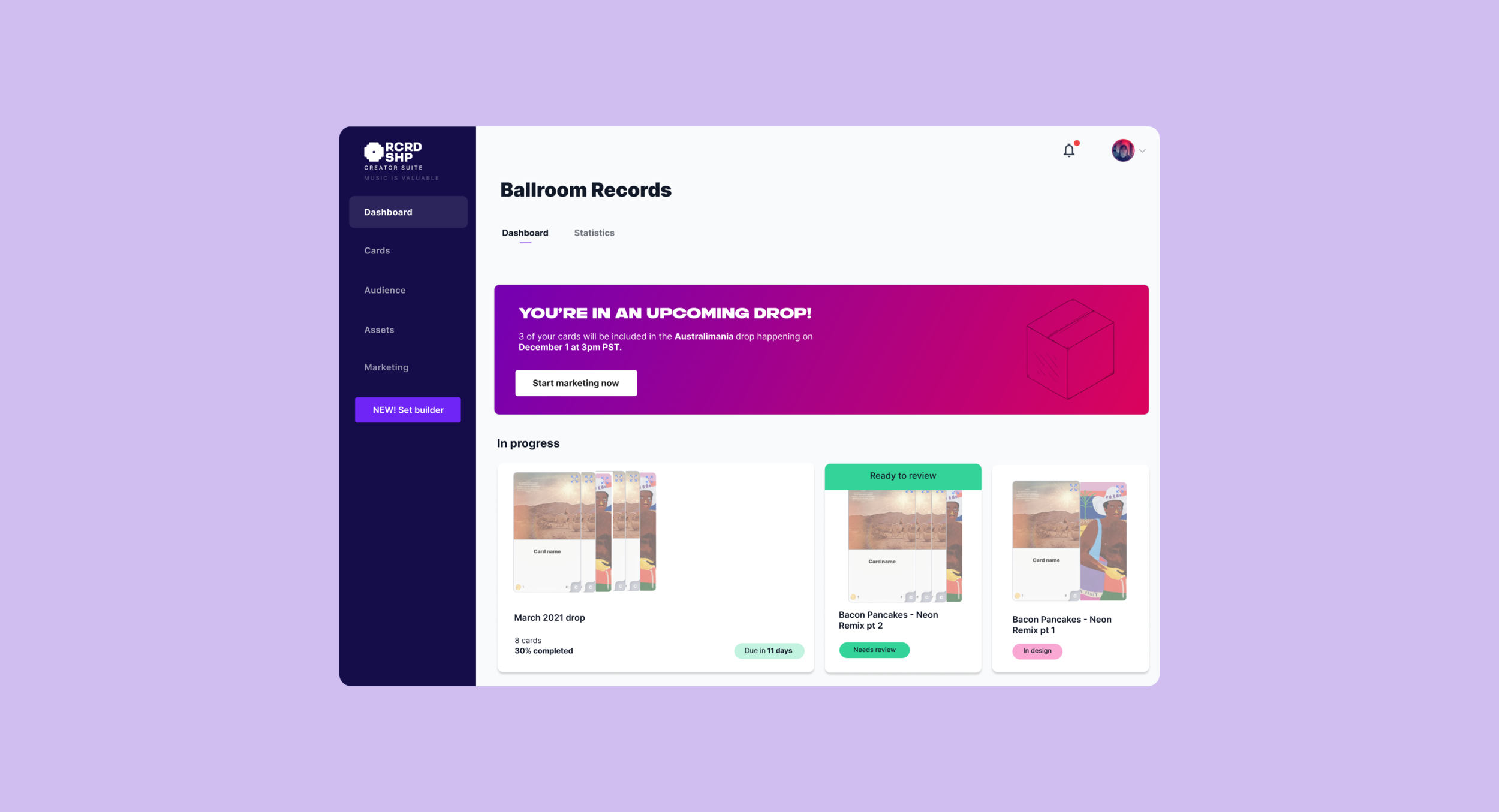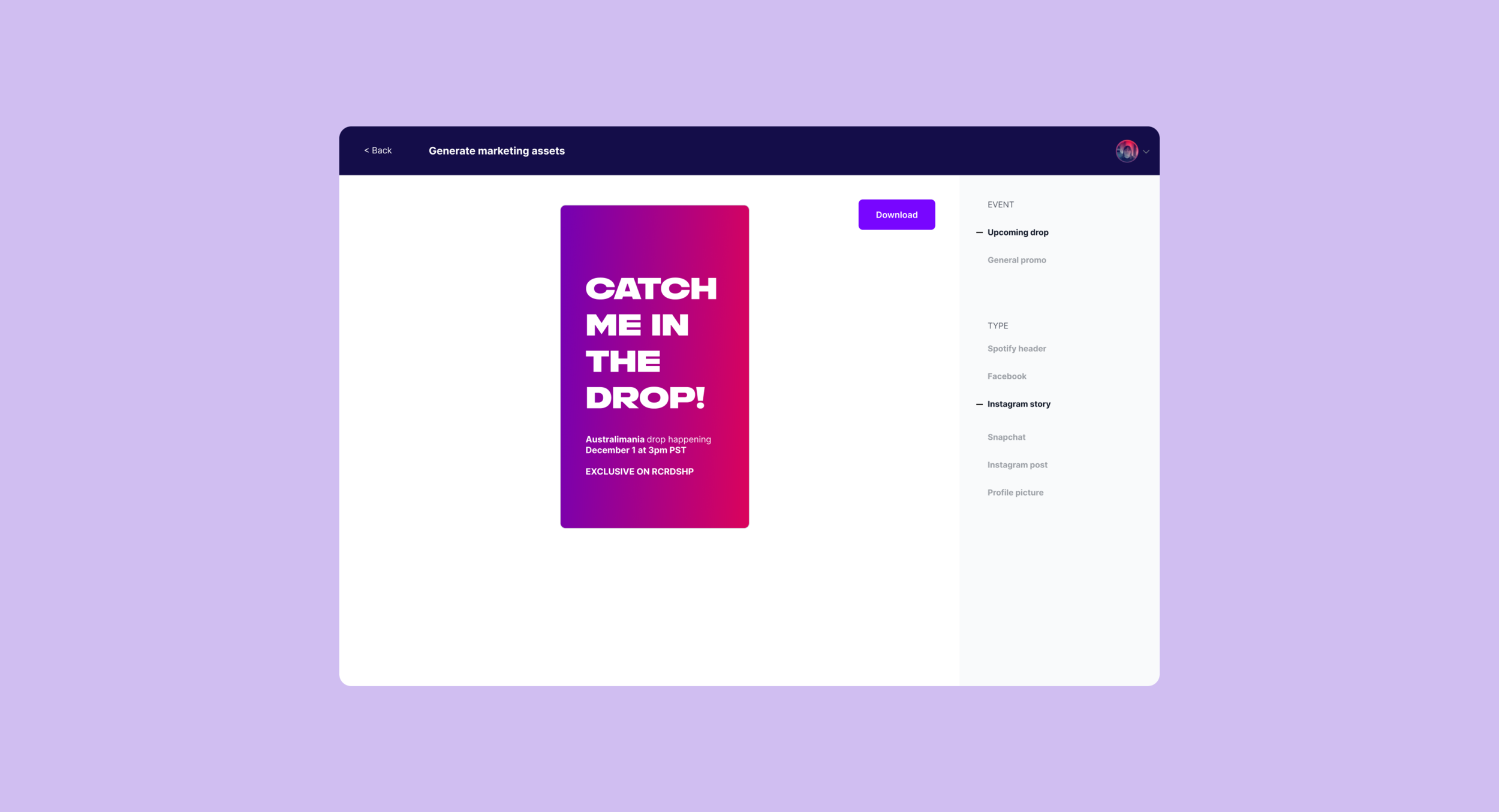An NFT creation and management platform
Summary
How might NFTs allow musicians to earn good money from their work again?
RCRDSHP is a startup creating a kind of trading card game, where the trading cards are NFTs and the content is based around electronic music, festivals, DJs and raves. The founder is a DJ and wanted to create this as an alternative source of revenue for musicians.
I worked with them to develop their Creator Suite, where electronic musicians could manage and build NFTs to be sold on the platform.
I was responsible for the Creator Suite product and the company’s internal management tool product as both designer and product owner (startup life!)
Originally when I joined the company, the Creator Suite existed in a pre-MVP state, having been built using unstyled Tailwind CSS components, and was sort of half-finished. The users for it - the electronic musicians - existed in the business ecosystem, but had never been onboarded to the product.
Setting the vision, managing the roadmap
I planned and ran a vision and roadmap workshop to understand the vision from everyone around the organisation, bring everyone along, and set a vision for the next months of work.
I love Figjam! Also a pretty big fan of workshops in general
So we had musician partners already and a half-baked platform for them - how would we bring the two together?
To start on onboard them, I designed a feature that was pretty easy to build and small enough to gently get everyone onto the system - card approvals. Before this feature, the entire process of creating a card was done in emails between the artist and our employees, including all document uploads, approvals and iterations. As we scaled, this process and its lack of transparency was becoming a stressor.
In the screens below, there’s one thing the user needs to do - approve the card. Can you find where to do that on the first screen? 🤔
My very ugly baby
Every new feature also required the employee-side product to reflect the changes. The employee tool has previously never been touched by a designer, and had a pretty bad user experience in many ways. And I had control over the engineering backlog! It was an exercise in prioritisation and self control as a product designer to remind myself that this product only had less than 30 users, all employees - so the ROI of a redesign just didn’t add up.
An example of one page below, the Card Definitions page:
In what we actually shipped, we just added functionality to make user’s lives easier as fast as possible.
Made the navigation less horrible, and removed the “Back to App” link which threw people off a lot
Added a total results count of all table rows, so card managers didn’t have to count manually, which they were (!)
Added ability to select and do actions on multiple rows at once
Added filters to the table
The end result isn’t pretty, but I’m proud of the impact I had as a product designer - it was easier and faster for my users to use, and made it easier for them to do their jobs - and in a situation where visual design wasn’t a priority, I’m happy I didn’t use any engineering time on it.
Internal research
I was a design, research and product management team of one on this product. I used Figjam to record all my research in one big brain dump board. I found this an effective way to visualise everything, and I liked that Figjam made it open to everyone on the team to access. I also experimented with Roam Research as a note taking tool.
Figma as a research repository… not bad
What I learned
About the balance between design and product thinking - I had to practice having one half of my brain holding onto the vision of an ideal state for the product, while the other half was cutting it down into the smallest buildable pieces and being brutal about priority and what really counted as MVP. I found making deliberate blocks of time to think in each way was a better approach than trying to do everything all at once.
How to manage a backlog in Pivotal Tracker
What exactly an NFT is









